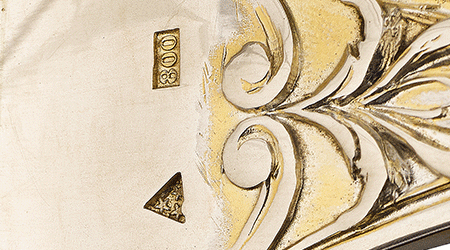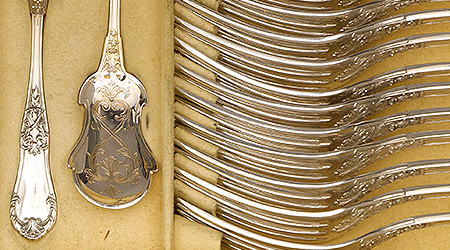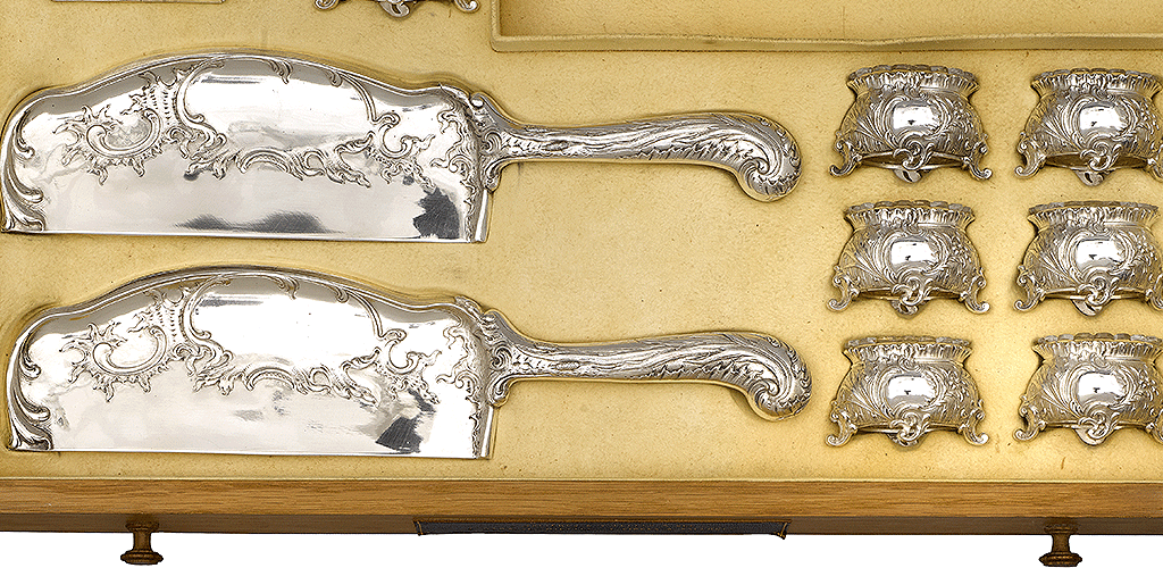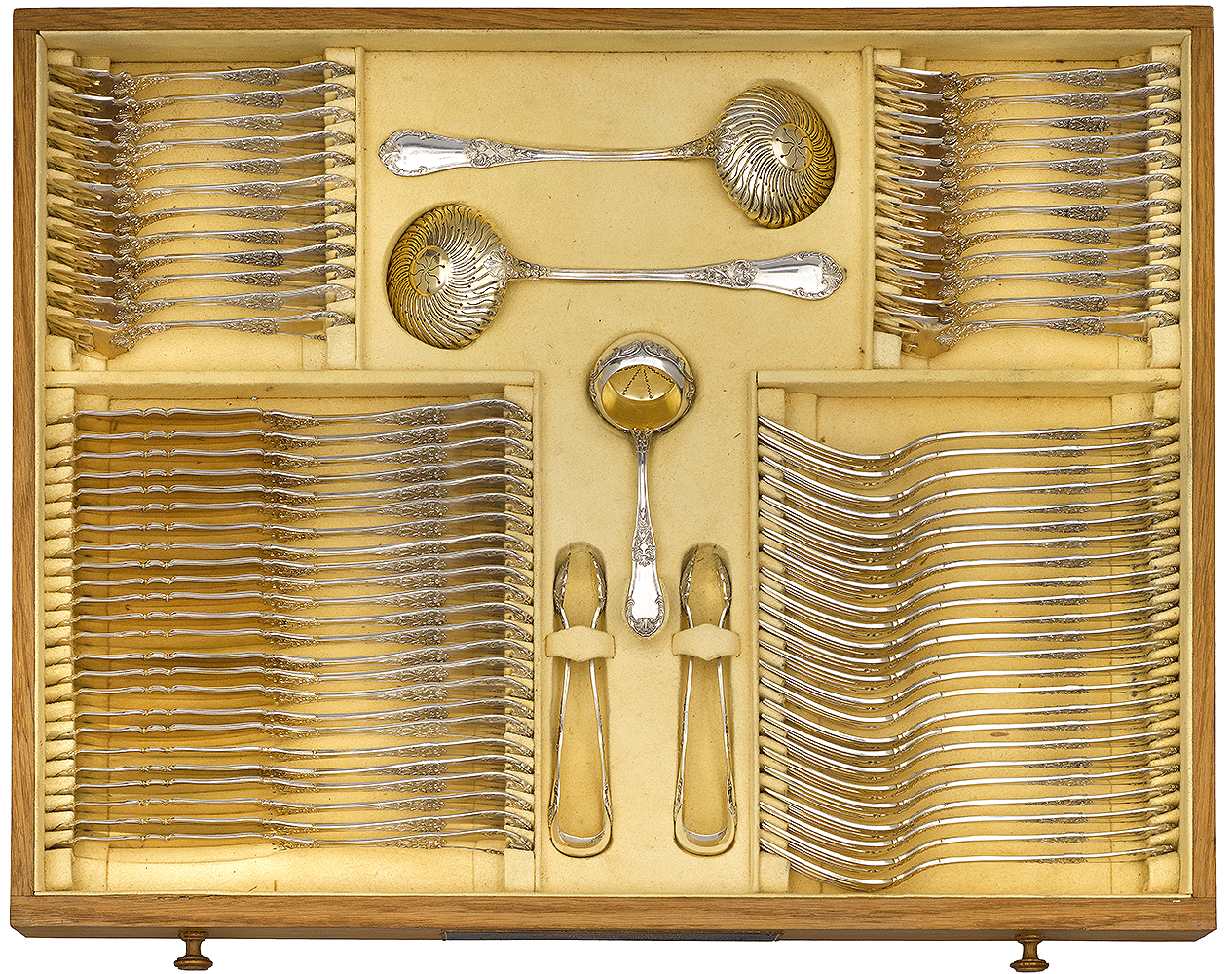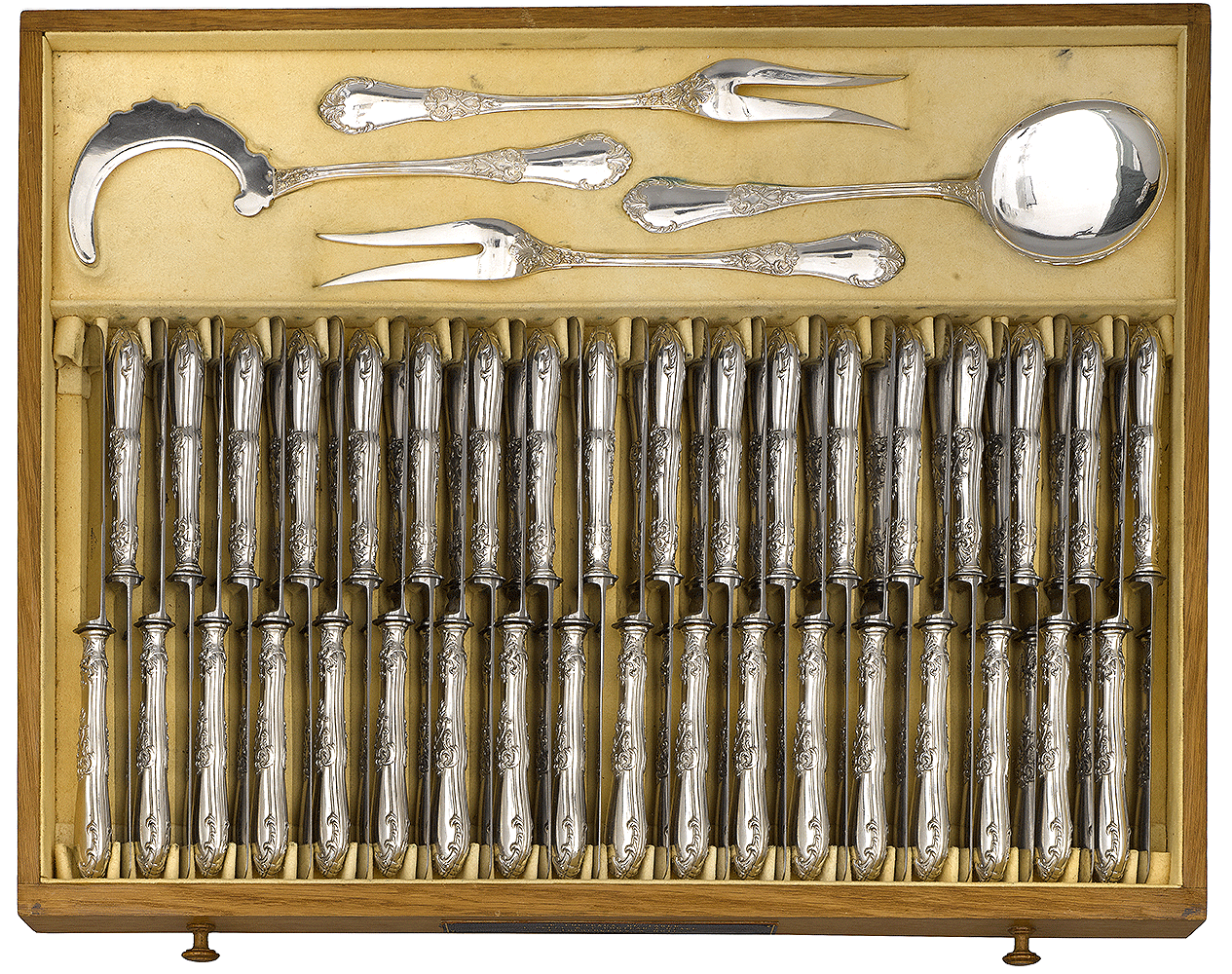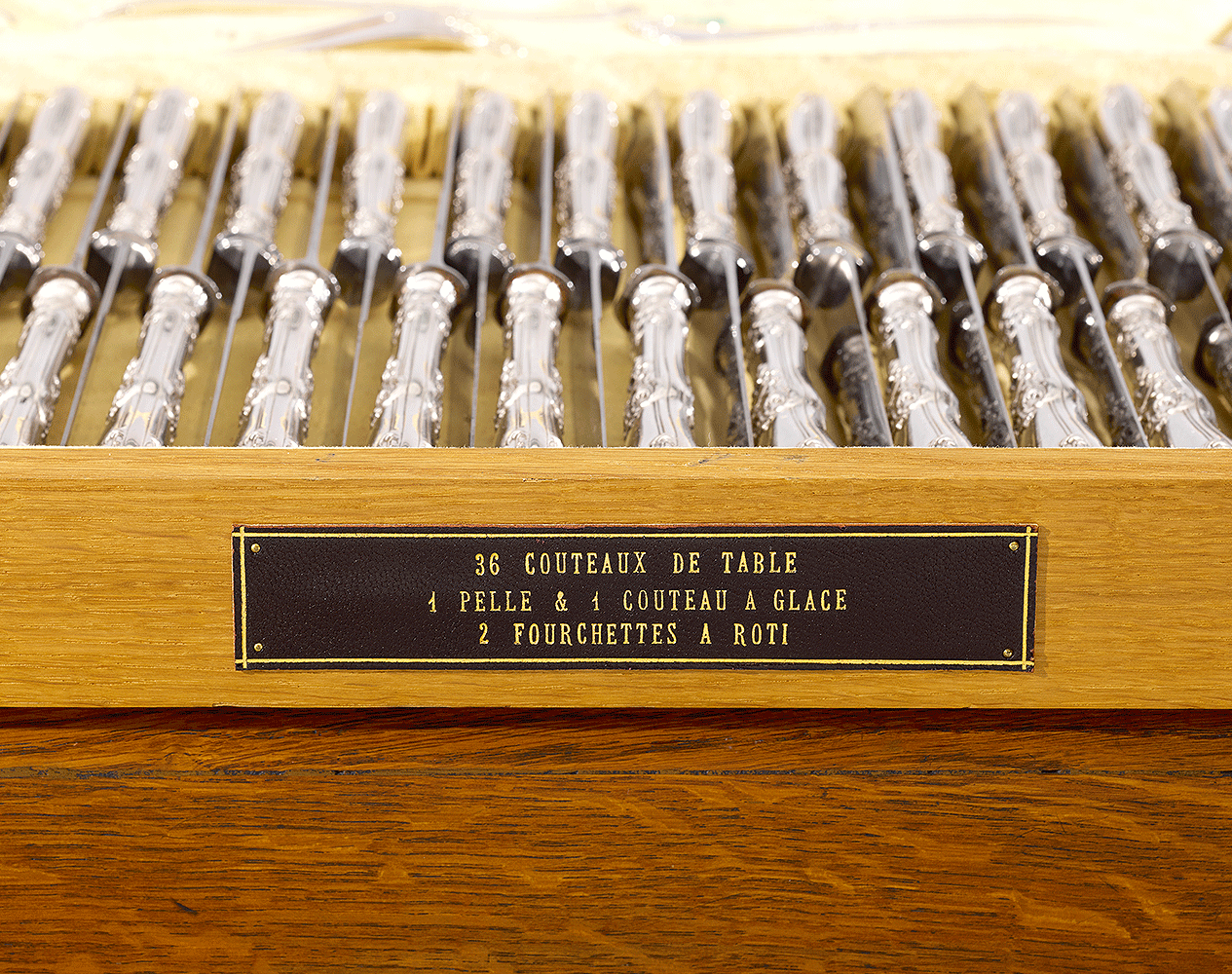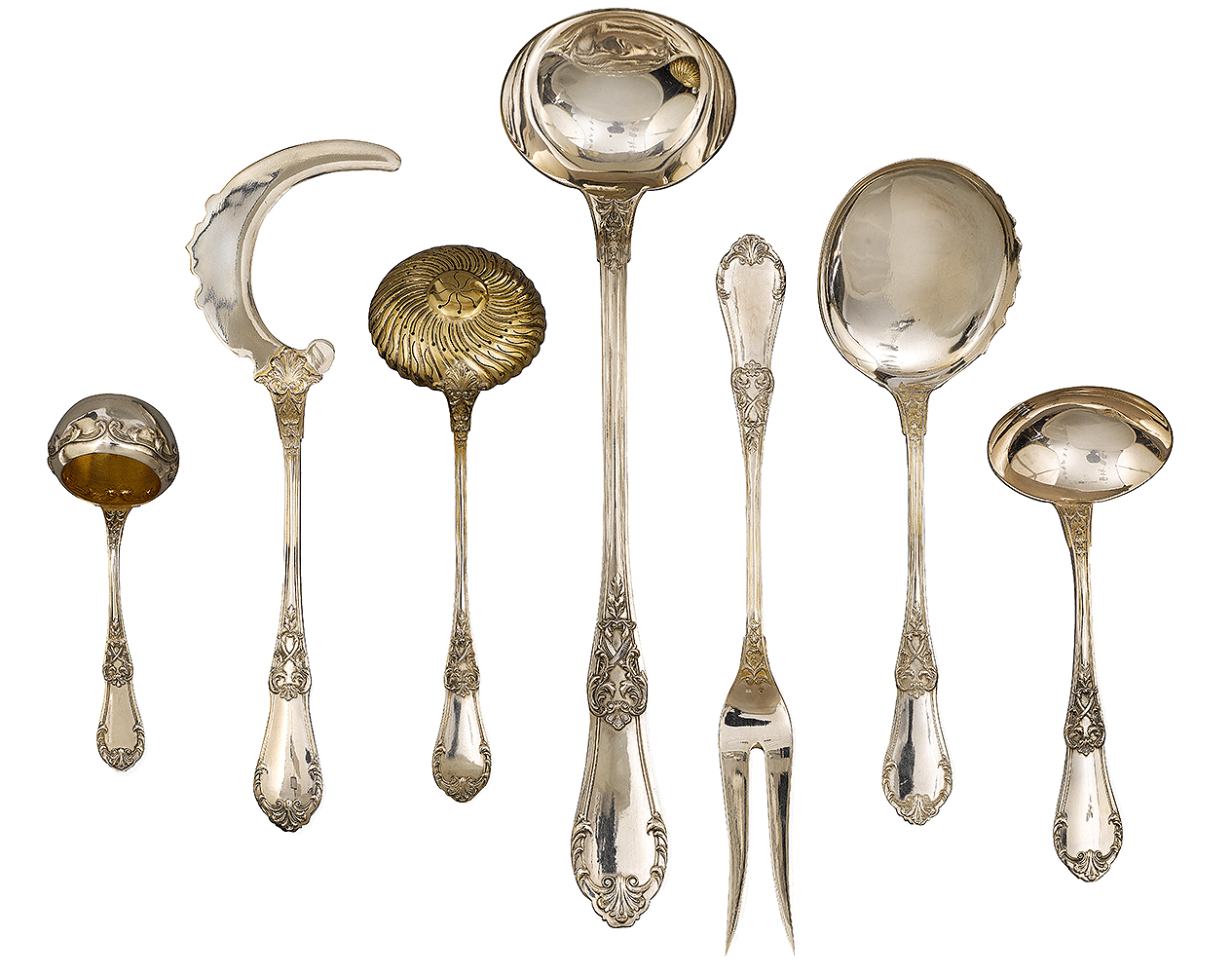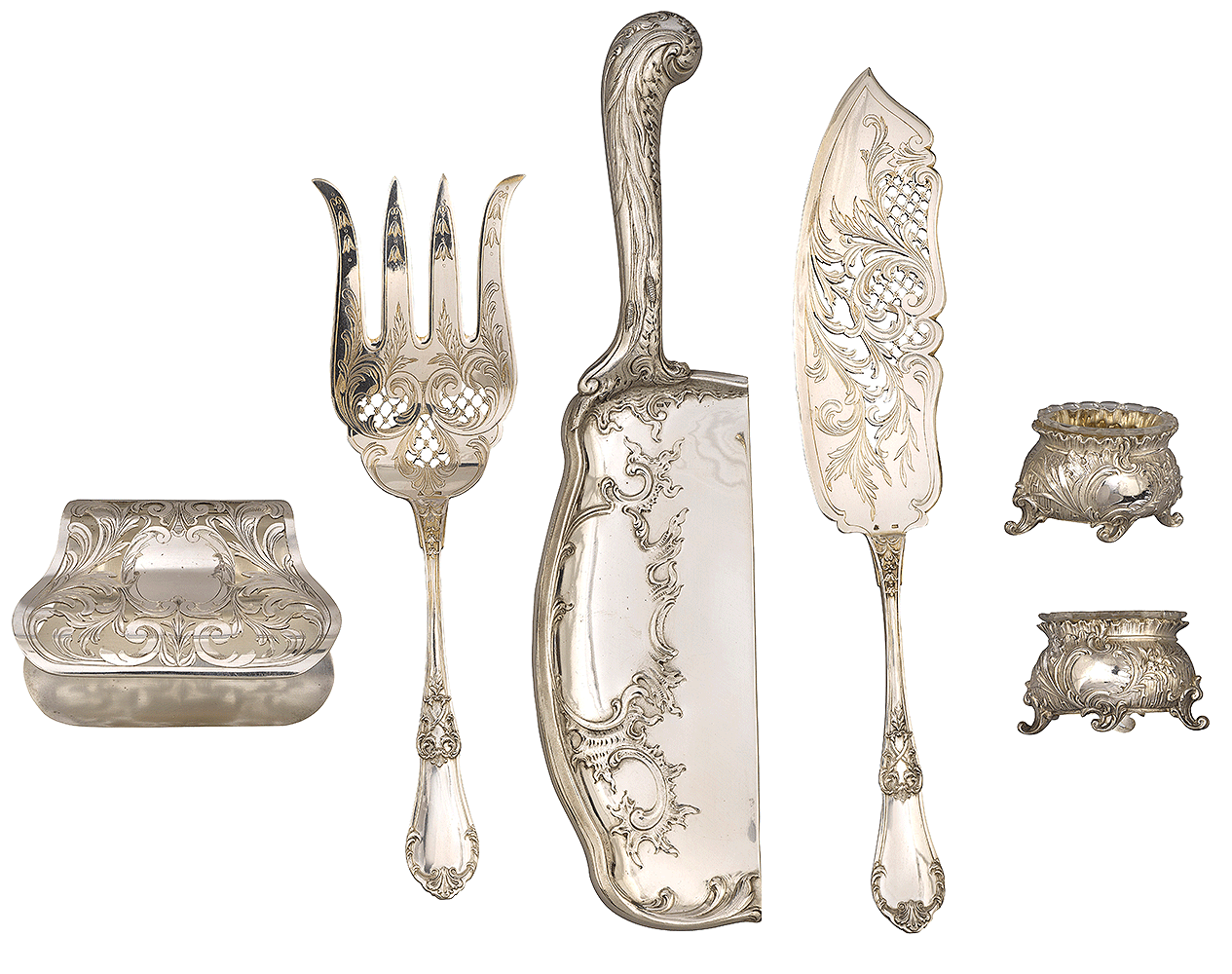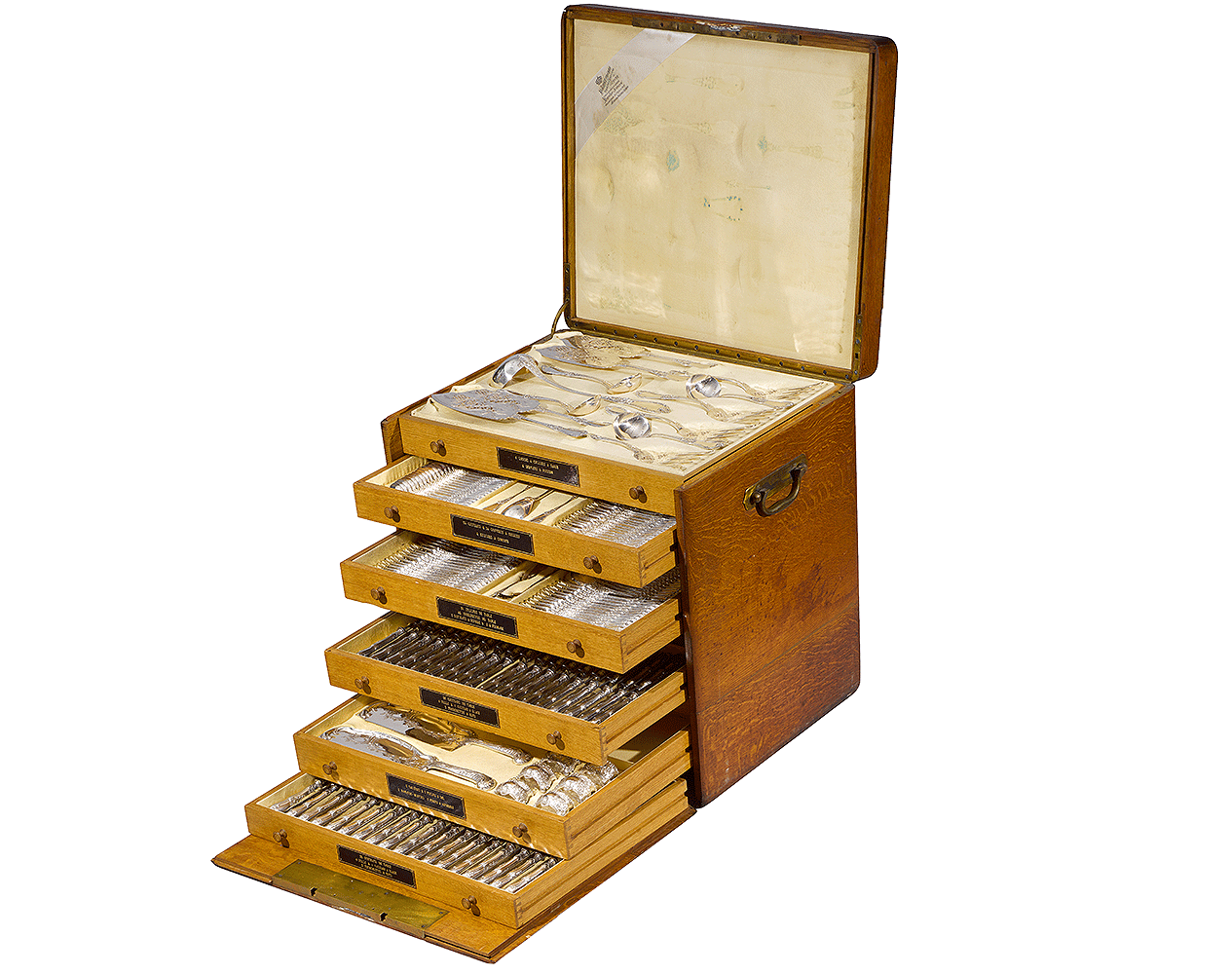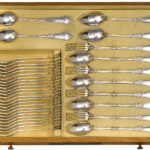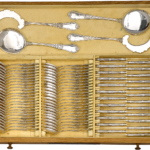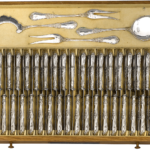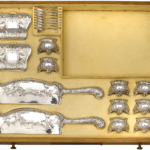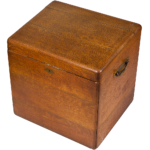An extensive 404-piece canteen of silver flatware for 24 persons, chased with stylised foliage and palmettes, each stamped with the maker’s hallmark and a silver standard mark; all contained in a fitted wooden box with nine drawers:
1) 1 soup ladle; 4 sauce ladles; 4 fish slicers and 4 fish forks;
2) 24 table spoons; 48 table forks; 2 butter and 2 cheese knives;
3) 24 table forks; 4 stew serving spoons; 4 pairs of salad serving forks and spoons;
4) 24 dessert knives and 24 dessert forks; 4 dessert serving spoons;
5) 36 table knives; 1 spade and 1 ice knife; 2 roast serving forks;
6) 36 table knives; 1 spade and 1 ice knife; 2 roast serving forks;
7) 2 spades and 2 ice knives; 24 coffee spoons; 24 ice cream spoons;
8) 24 fish knives and 24 fish forks; 24 oyster forks; 2 condiment ladles; 2 pairs of sugar tongs; 1 tea caddy spoon;
9) 8 salt cellars; 8 salt shovels; 2 crumb scoops; 2 pairs of asparagus tongs.
The firm of Wolfers Frères was established circa 1812 in Brussels by two brothers Edouard and Guillaume Wolfers, who moved to Belgium from Augsburg. In 1842, they were joined by the third brother, Louis Wolfers, who later passed the family business to his son Philippe. Alongside Odiot and Aucoc in Paris, Garrard in London, Fabergé in Russia, and Tiffany in America, Wolfers Frères were among the most distinguished silverware and jewellery manufacturers of the 19th–early 20th century. Their production ranged from silverware in various revivalist styles in the mid-19th century to Art Nouveau and Art Deco objects in the later period.
